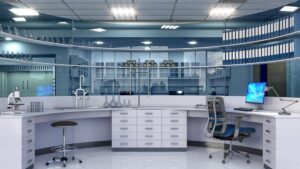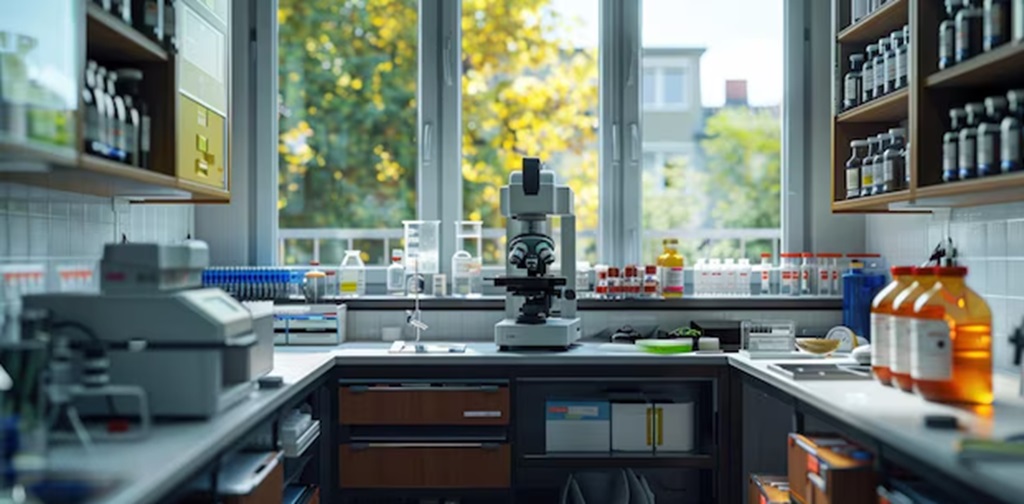
In today’s fast-paced scientific environment, laboratories are often tasked with achieving more in less space. Whether in academic research facilities, clinical labs, or industrial settings, the demand for efficiency and functionality within limited square footage has never been higher.
Small laboratories face unique challenges, including the need to accommodate essential equipment, provide ample workspace, and maintain rigorous safety standards—all within a confined area. Maximizing space in these environments requires more than just clever organization; it demands innovative design and smart furniture solutions that can adapt to the evolving needs of the lab.
From modular workstations to vertical storage, the right furniture choices can transform a cramped lab into a highly efficient, productive, and safe workspace. In this article, we’ll explore some of the most effective strategies for optimizing small laboratory spaces, focusing on the smart furniture solutions that can make a significant difference.
Assessing Space Requirements
Before diving into furniture selection and layout planning, it’s crucial to thoroughly assess the specific space requirements of your laboratory. Understanding these needs is the foundation of creating an efficient and functional environment, especially in small laboratories where every inch counts.
1. Identifying Core Activities and Equipment Needs
Start by identifying the core activities that will take place in the lab. Will the lab focus on chemical analysis, biological research, or perhaps a combination of multiple disciplines?
Each type of work demands different equipment, workstations, and storage solutions. For instance, a lab heavily involved in chemical processes may require more bench space for glassware and fume hoods, while a biological lab might need specialized storage for sensitive samples and refrigeration units.
2. Determining Storage Requirements
Next, consider the storage needs of the lab. Assess the types of materials, samples, and equipment that will be stored.
This includes not only everyday tools and supplies but also long-term storage of chemicals, reagents, or archived data. Understanding these needs helps in selecting appropriate storage solutions, such as chemical-resistant cabinets, refrigerated storage, or compact shelving systems that maximize vertical space.
3. Considering Workflow and Accessibility
A key aspect of assessing space requirements is understanding the workflow within the lab. Consider how lab personnel will move between workstations, access equipment, and retrieve stored items.
In a small lab, it’s essential to minimize unnecessary movement and ensure that everything is within easy reach. This may involve mapping out the most efficient pathways and strategically placing workstations and storage units to support a smooth workflow.
4. Customizing Solutions to Fit the Space
Finally, consider the physical dimensions of the lab space. Measure the available floor area, ceiling height, and any structural elements that could impact furniture placement, such as columns, windows, or doors.
Customizing furniture solutions to fit these specific dimensions can help in maximizing the use of available space. For example, opting for custom-built cabinets that fit precisely into an alcove or choosing modular furniture that can be reconfigured as needs change ensures that the lab is both functional and adaptable.
By carefully assessing the space requirements upfront, you can make informed decisions about the types of furniture and layout that will best support your lab’s operations. This approach not only maximizes efficiency but also helps create a safe and comfortable environment for lab personnel to work in.

Additional Reading: Modular Laboratory Systems: The Flexible Solution for Dynamic Research Needs
Modular Furniture for Flexibility
In the dynamic environment of a small laboratory, flexibility is key. Laboratories often need to adapt quickly to new research requirements, changes in equipment, or the addition of new team members.
This is where modular furniture becomes an invaluable asset. By offering adaptability and customization, modular furniture solutions can transform a small, rigid space into a versatile and efficient working environment.
1. The Benefits of Modular Design for Small Laboratories
Modular furniture is designed with flexibility in mind. These systems typically consist of standardized units that can be easily assembled, reconfigured, or expanded as needed.
This adaptability is particularly beneficial in small labs, where space constraints demand creative solutions. Whether you need to add more storage, create additional workstations, or rearrange the lab layout to accommodate new equipment, modular furniture allows you to make these changes quickly and with minimal disruption.
2. Versatile Workbenches and Stations
One of the most common applications of modular furniture in small laboratories is the use of modular workbenches.
These workbenches can be customized with various add-ons, such as shelving, drawers, power outlets, and even specialized surfaces like chemical-resistant tops. The ability to modify and expand workbenches as the lab’s needs evolve ensures that your workspace remains functional and efficient, no matter how the lab’s focus shifts over time.
3. Modular Shelving and Storage Units
Storage is a critical aspect of any laboratory, especially in smaller spaces where every square foot must be optimized.
Modular shelving units offer a versatile solution for storage needs. These units can be adjusted in height, expanded with additional shelves, or even moved to different locations as required. This flexibility makes it easy to accommodate varying storage demands, from small lab supplies to larger pieces of equipment.
4. Reconfigurable Layouts for Changing Needs
The modularity of furniture extends beyond individual pieces; it also applies to the overall layout of the lab. With modular furniture, you can easily reconfigure the entire lab space to meet changing requirements.
For example, if a new project requires more collaborative space, workstations can be rearranged to create a shared workspace. Alternatively, if a project requires isolation of specific tasks, partitions and modular walls can be introduced to create separate zones.
5. Cost-Effective and Sustainable Solutions
In the long run, investing in modular furniture for small laboratories is also a cost-effective solution. Instead of having to purchase entirely new furniture whenever the lab’s needs change, modular systems allow you to make adjustments and additions as needed. This saves money and reduces waste, contributing to more sustainable lab practices.
In summary, modular furniture offers unparalleled flexibility for small laboratories, making it possible to adapt to changing needs without sacrificing functionality or efficiency. By incorporating modular workbenches, shelving, and other furniture into your lab design, you can create a space that is not only highly efficient but also ready to evolve alongside your research and operational demands.
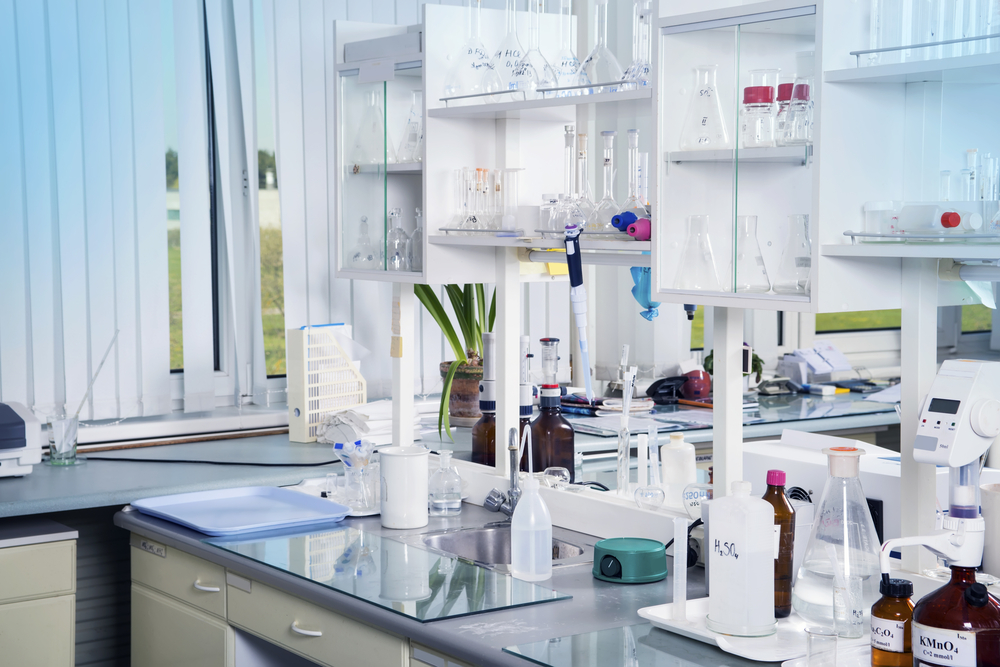
Vertical Storage Solutions for Small Laboratories
When it comes to maximizing space in small laboratories, one of the most effective strategies is to think vertically.
While floor space is often limited, vertical storage solutions can significantly increase the amount of usable storage and work areas without expanding the lab’s footprint. By utilizing the full height of the room, vertical storage helps keep the lab organized and ensures that every available inch is put to good use.
1. Maximizing Wall Space with Tall Cabinets
Tall cabinets are a cornerstone of vertical storage in small labs. These units take advantage of ceiling height, providing ample storage without occupying much floor space.
Tall cabinets can be customized with adjustable shelving, drawers, and compartments to accommodate various lab items, from chemicals and glassware to instruments and documentation. Their height allows for a large storage capacity, helping to declutter workbenches and keep essential materials close at hand but out of the way.
2. Wall-Mounted Shelving and Racks
In addition to tall cabinets, wall-mounted shelving and racks offer flexible vertical storage options in small laboratories.
Shelving units can be installed above workbenches or along walls, providing easy access to frequently used items. Adjustable shelves allow you to customize the space to fit different-sized containers, equipment, or supplies. Wall-mounted racks, such as those designed for storing lab coats, tools, or small instruments, help keep the floor clear and reduce the need for additional storage furniture.

3. Overhead Storage Solutions
Overhead storage systems are another innovative way to make use of vertical space in small laboratories. These systems typically consist of suspended shelves, bins, or cabinets that are mounted from the ceiling or upper walls.
Overhead storage is ideal for items that are not needed daily but still need to be readily accessible. By lifting storage off the floor and out of immediate work areas, overhead solutions free up valuable space for other uses.
4. Customizable Vertical Storage Units
Many vertical storage solutions can be customized to fit the unique needs of small laboratories.
For instance, sliding vertical shelves or pull-out racks can be installed in tight spaces, allowing you to store items in areas that would otherwise be inaccessible. Custom shelving units that fit around existing equipment or architectural features can also help maximize storage capacity while ensuring that the lab remains functional and easy to navigate.
5. Safety Considerations
While vertical storage is an excellent way to save space in small laboratories, it’s important to consider safety when implementing these solutions.
Heavy items should be stored on lower shelves to prevent accidents, and frequently used items should be kept within easy reach to reduce the risk of strain or injury. Additionally, all tall and wall-mounted units should be securely anchored to prevent tipping or falling, especially in environments where vibration or movement is common.
In short, vertical storage solutions are essential for making the most of small laboratory spaces. By utilizing the full height of your lab, you can increase storage capacity, improve organization, and keep the workspace clear and efficient.
Whether through tall cabinets, wall-mounted shelving, or overhead systems, vertical storage is a practical and effective way to enhance the functionality of compact and small laboratories.
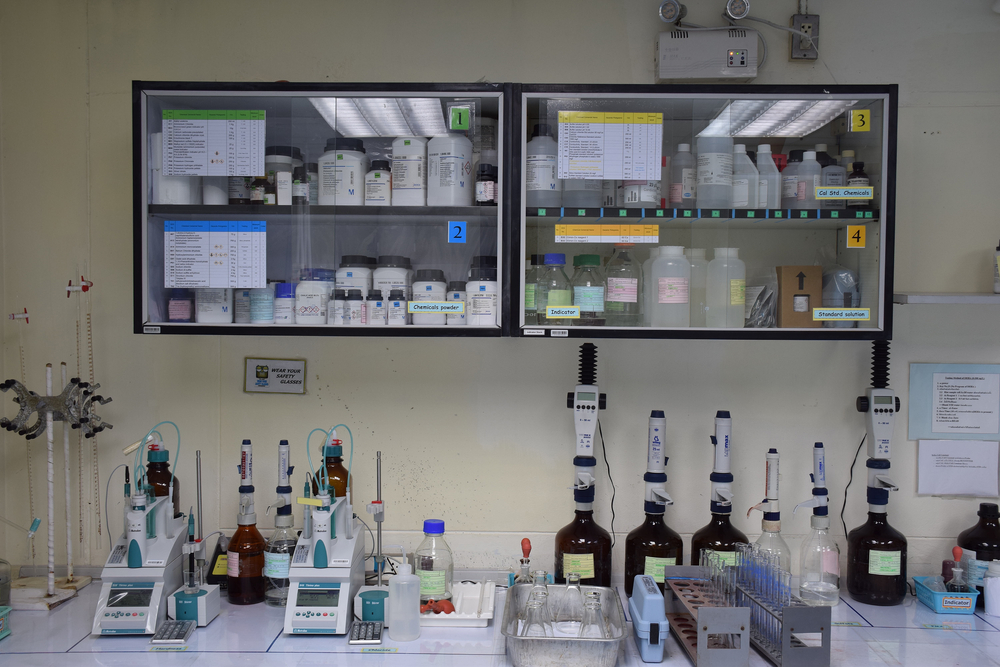
Multi-Functional Furniture for Small Laboratories
In a small laboratory, every piece of furniture needs to do more than just occupy space—it needs to serve multiple purposes to truly maximize efficiency.
Multi-functional furniture is designed with this principle in mind, combining various features into a single unit to save space while enhancing functionality. By investing in furniture that performs double or even triple duty, laboratories can create a more organized, productive, and adaptable environment.
1. Workbenches with Built-In Storage
One of the most practical examples of multi-functional furniture for small laboratories is the workbench with built-in storage.
These workbenches not only provide a solid surface for conducting experiments and procedures but also come equipped with drawers, cabinets, and shelves underneath. This dual-purpose design allows lab technicians to keep essential tools and supplies within arm’s reach, reducing the need to move around the lab and saving valuable floor space.
By integrating storage into the workbench, labs can maintain a clutter-free workspace while ensuring that everything needed is conveniently located.
2. Mobile Carts: Versatile and Portable
Mobile carts are another excellent example of multi-functional furniture. These carts are designed to be easily moved around the lab, making them ideal for transporting equipment, supplies, or samples between different workstations in cramped, small laboratories.
Many mobile carts come with built-in storage options such as drawers, shelves, or even electrical outlets, allowing them to serve as temporary workstations or storage units wherever they are needed. Their portability and versatility make them indispensable in small laboratories where space and flexibility are at a premium.
3. Folding and Collapsible Furniture
In labs where space is extremely limited, folding and collapsible furniture can be a game-changer. The ability to quickly expand or reduce the workspace helps maintain a flexible and efficient lab environment.
Items such as fold-away tables, collapsible chairs, and retractable shelves can be stored compactly when not in use and easily set up when needed. This type of furniture is particularly useful in labs that need to reconfigure space frequently for different tasks or accommodate additional staff during busy periods.
4. Seating Solutions with Integrated Storage
Even seating can be multi-functional in small laboratories.
Stools and chairs with integrated storage compartments under the seat or in the base provide additional space for storing personal items, lab notebooks, or small tools. This eliminates the need for separate storage furniture and keeps the lab more organized. Multi-functional seating is especially useful in labs where counter space is limited and every bit of storage matters.
5. Convertible and Expandable Furniture
Convertible furniture offers the ultimate in flexibility for small laboratories. Convertible pieces are particularly valuable in dynamic lab environments where space requirements can vary from day to day.
Examples include tables that can be extended to accommodate more work area, or cabinets that unfold to reveal additional workspace or storage. This type of furniture adapts to the changing needs of the lab, providing the right amount of space exactly when it’s needed.
Additional Reading: Maximizing Space: The Best Lab Cupboards for Compact Areas
6. Cost-Effective and Space-Saving Benefits
The primary benefit of multi-functional furniture is that it maximizes the use of limited space, but it also offers cost savings. Instead of purchasing multiple pieces of furniture, small laboratories can invest in a single, multi-functional unit that meets several needs. This reduces the overall footprint of furniture in the lab, leaving more space for critical equipment or additional workstations.
To summarize, multi-functional furniture is an essential component of well-designed small laboratories. By combining multiple uses into single pieces of furniture, labs can save space, reduce clutter, and create a more efficient and adaptable work environment.
Whether through workbenches with built-in storage, mobile carts, or convertible tables, incorporating multi-functional furniture into your lab design ensures that you’re getting the most out of every square foot.
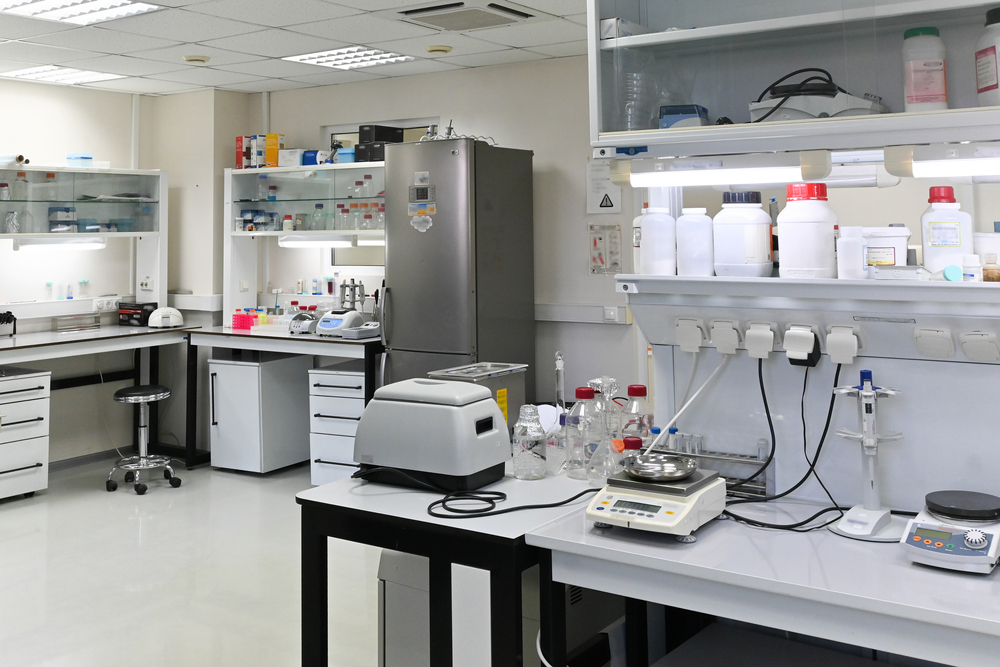
Space-Saving Equipment and Technology
In small laboratories, every square foot counts, and the choice of equipment and technology can significantly impact the overall efficiency and functionality of the space. By opting for compact, space-saving equipment and leveraging advanced technology, laboratories can maintain high standards of productivity and precision without being constrained by limited space.
This section explores the key strategies for integrating space-saving equipment and technology into small lab environments.
1. Compact Laboratory Equipment
The advancement of laboratory technology has led to the development of more compact and efficient equipment. Manufacturers are increasingly designing instruments with smaller footprints, without compromising on performance.
For example, benchtop centrifuges, mini incubators, and compact fume hoods are all designed to deliver the same capabilities as their larger counterparts but take up significantly less space. By selecting these compact options, small laboratories can free up valuable bench space for other essential tasks, making the most of their available area.
2. Multi-Functional Instruments
Much like multi-functional furniture, multi-functional lab instruments are essential in small laboratories. These instruments combine multiple functions into a single piece of equipment, reducing the need for several separate devices.
For instance, a single unit might combine the functions of a spectrophotometer, microplate reader, and fluorometer, thus saving space and reducing clutter. These all-in-one solutions optimize space and streamline workflow by centralizing numerous processes in one location.
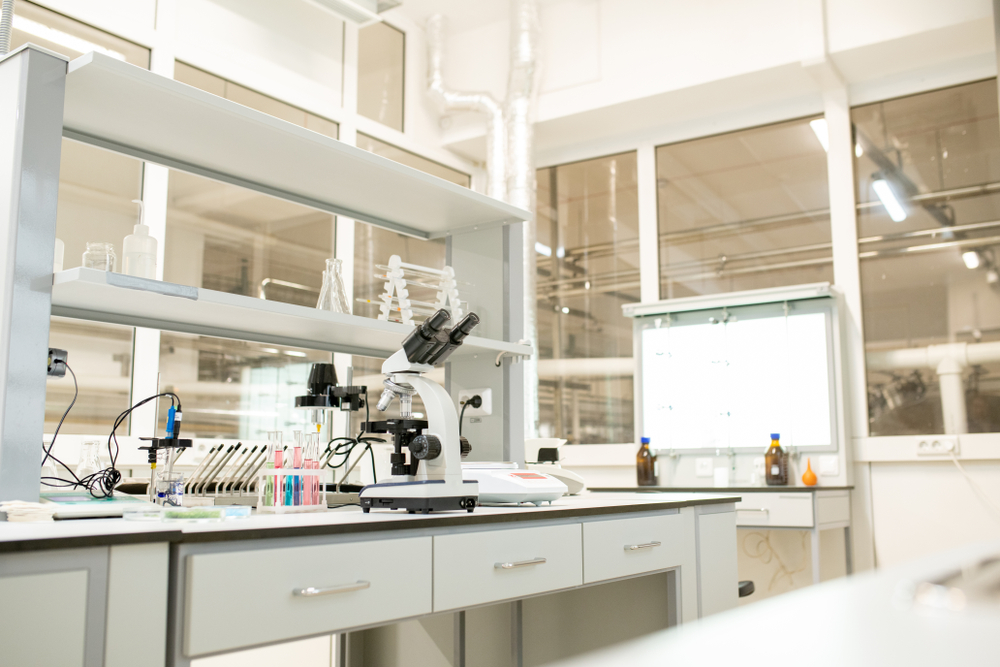
3. Digital Tools and Automation
The adoption of digital tools and automation in small laboratories is another effective way to save space. Digital systems can replace physical storage of data, eliminating the need for large filing cabinets or storage rooms filled with paper records.
Cloud-based data storage and management systems allow for secure, accessible, and space-efficient data handling. Additionally, automation technology, such as robotic systems for sample handling, can perform repetitive tasks with precision while occupying a minimal footprint, thereby freeing up space for other activities.
4. Wireless and Portable Devices
Wireless and portable devices offer flexibility and space savings in small laboratories. Wireless instruments reduce the need for extensive cabling, which can clutter workspaces and limit the arrangement of equipment.
Portable devices, such as handheld analyzers or portable spectrometers, can be easily moved around the lab as needed, eliminating the need for dedicated space for each piece of equipment. This mobility allows labs to adapt their setup to current needs without being tied down by bulky, stationary devices.
5. Stackable and Integrated Systems
Stackable equipment systems are another innovative space-saving solution for small laboratories. These systems are designed to be placed on top of each other, allowing multiple devices to occupy the same footprint.
For example, stackable incubators or refrigerators can be used to maximize vertical space, especially in labs with limited floor area. Integrated systems, which combine several pieces of equipment into a single unit, also help reduce the overall footprint in the lab. These systems are particularly useful in small laboratories where every inch of space needs to be utilized efficiently.
6. Energy-Efficient and Quiet Operation
In addition to saving space, many modern laboratory devices are designed to be energy-efficient and operate quietly. This is particularly beneficial in small laboratories, where noise levels can quickly become disruptive. Compact, energy-efficient devices save on utility costs and reduce the need for additional space for cooling systems or soundproofing.
Overall, space-saving equipment and technology are crucial for maximizing the efficiency of small laboratories. By choosing compact, multi-functional, and digitally integrated tools, labs can maintain high levels of productivity while optimizing their limited space.
Whether through the use of stackable systems, portable devices, or automation, incorporating these innovative solutions into the lab design ensures that small spaces can support big scientific ambitions.
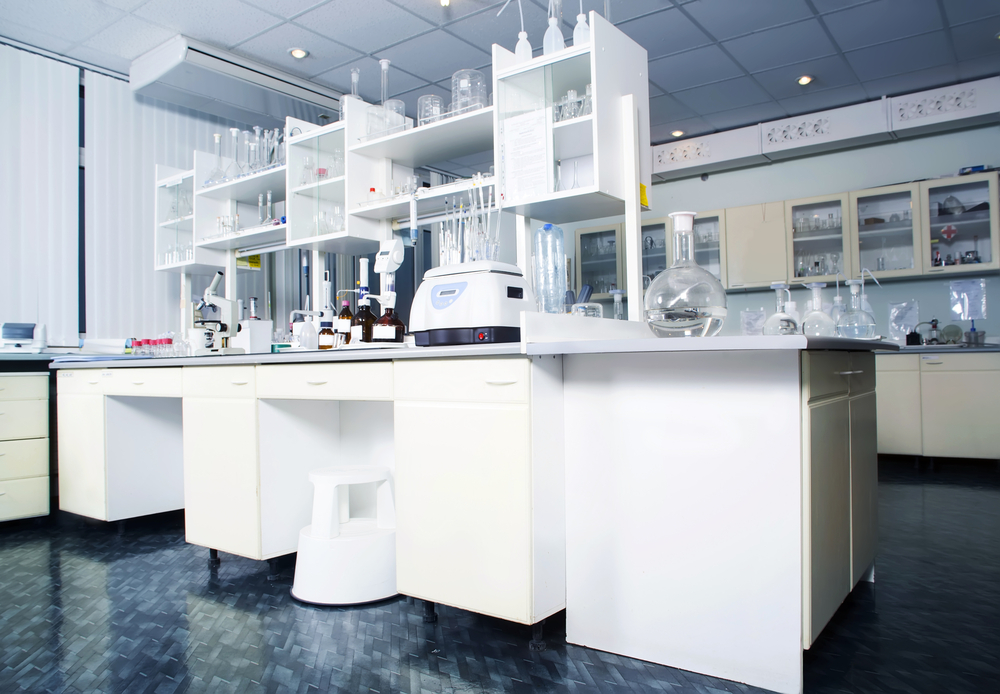
Custom Built-In Solutions
When off-the-shelf furniture and equipment can’t fully meet the unique needs of a small laboratory, custom built-in solutions offer an effective alternative.
This is where custom built-in solutions can play a pivotal role. By tailoring furniture and storage units to the specific dimensions and requirements of the lab, custom-built solutions ensure that every inch of space is utilized effectively, creating a seamless and highly functional environment.
Custom built-in solutions offer the added benefit of aesthetic integration with the lab’s overall design. By choosing materials, finishes, and colors that match the existing decor, custom built-ins can enhance the visual appeal of the lab while maintaining a cohesive look.
Additional Reading: Laboratory Furniture Design Trends: Combining Aesthetics with Practicality
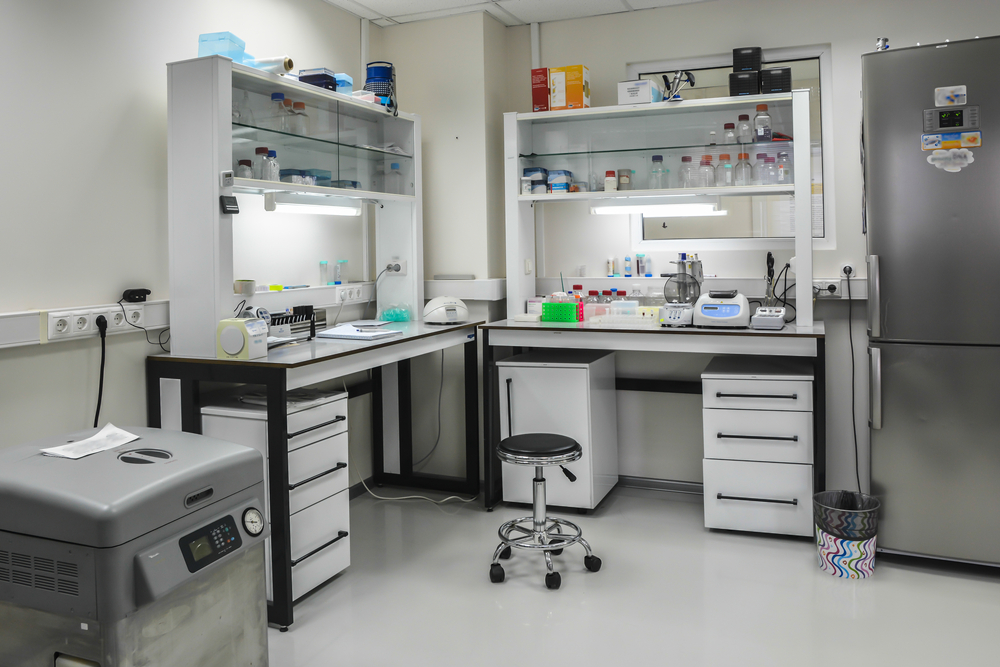
1. Tailored to Fit Every Nook and Cranny
One of the most significant advantages of custom built-in solutions is the ability to design furniture that fits perfectly into the available space. In small laboratories, awkward corners, alcoves, or sloped ceilings can make it difficult to use standard furniture effectively. Custom cabinetry, shelving, and workstations can be designed to ensure that no area goes to waste.
For instance, custom cabinets or shelving can be built to fit snugly into an alcove, providing storage that wouldn’t be possible with standard furniture. Similarly, a custom-built desk or workstation can be designed to fit under a window, making use of otherwise underutilized space.
2. Integrated Workstations and Storage
Custom built-in solutions allow for the seamless integration of workstations and storage. Instead of having separate pieces of furniture for different functions, a built-in unit can combine a work surface, storage drawers, and overhead cabinets, into a single structure.
This integration not only saves space in small laboratories, but also creates a more organized and efficient workflow. Everything needed for a specific task can be housed within the same unit, reducing the need to move around the lab and streamlining operations.
A wall of shelving that reaches to the ceiling, pull-out drawers that fit perfectly into a narrow space, or a built-in closet for storing lab coats and equipment, custom storage can be designed to fit the exact specifications of your laboratory. These solutions help maximize every inch of available space while keeping the lab organized and clutter-free.
3. Seamless Integration with Lab Equipment
Another advantage of custom built-ins in small laboratories is their ability to seamlessly integrate with existing lab equipment.
For instance, a built-in cabinet can be designed to house a specific piece of equipment, such as a refrigerator or centrifuge, with ventilation, electrical connections, and workspace all incorporated into the design. This eliminates the need for additional furniture or modifications and ensures that the equipment fits perfectly into the lab’s layout.
4. Flexibility in Design
Contrary to what some may think, custom built-ins don’t necessarily mean a loss of flexibility. Many custom solutions can be designed with modular elements that allow for future adjustments or expansions.
For example, adjustable shelving, removable panels, or expandable work surfaces can be incorporated into the design, providing the lab with the ability to adapt to changing needs over time.
Whether it’s maximizing awkward spaces, integrating equipment seamlessly, or providing long-term adaptability, custom built-ins are a smart investment for laboratories looking to optimize their operations in a limited space.
Additional Reading: The Evolution of Cabinet Construction for Laboratory Storage
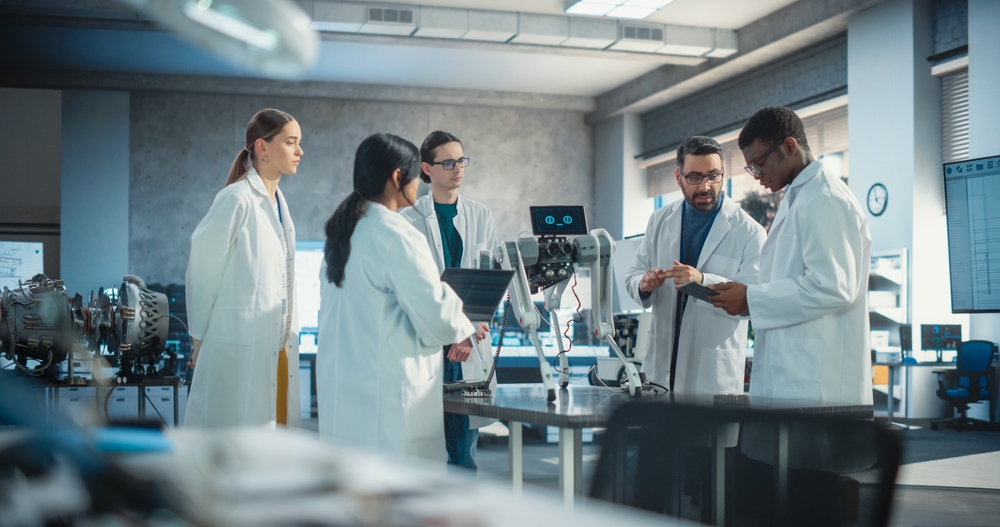
Conclusion
Maximizing space in small laboratories requires a thoughtful approach to design, furniture, and equipment selection. From modular furniture and vertical storage solutions to space-saving technology and custom built-ins, each element plays a crucial role in creating an efficient and functional lab environment.
By utilizing the guidance of expert lab designers, owners of small laboratories can implement these smart furniture solutions and optimize the available space, improve workflow, and ensure that they are fully equipped to handle the demands of modern scientific research.
At Genie, we excel in crafting custom solutions tailored to the unique needs of small laboratories in compliance with SEFA (Scientific Equipment and Furniture Association) standards and all safety regulations. With our extensive expertise, cutting-edge software, and advanced manufacturing capabilities, we’re able to deliver custom furniture, fume hoods, and steel products with unmatched precision and speed.
Our fully equipped sheet metal shop, powder coat facility, and assembly line in California enable us to manufacture a wide range of steel products, ensuring that your lab is outfitted with the highest quality solutions in standard production times.
Whether you’re looking to optimize space in a small lab or require specialized furniture to meet specific requirements, Genie Scientific is an accredited lab designer that is here to help. Contact us today to discover how we can transform your lab into a space that combines functionality, efficiency, and innovation.

